Chamunda (Sanskrit: ????????, IAST: C?mu???) also known as Sachchi Mata, Chamundi, Chamundeshwari or Charchika, is a fearsome aspect of the Devi and one of the Matrikas also considered as Divine Mother in Hinduism.
| Chamunda | |
|---|---|
   Clockwise from top : 1.Chamunda depicted in a skeletal form in the Kalingan style. A flame crowns her while she sits upon a corpse wearing a skull-garland. Below her, jackals feed on the dying man's entrails. 2. Close-up of cut-off head 3. Chamunda's face 9th-century sculpture from Jajpur, Odisha, currently in the Odisha State Museum | |
| Affiliation | Devi, Matrika |
| Abode | Cremation grounds or fig trees |
| Mantra | Om Jai Chamunda Devi |
| Weapon | Trident and sword |
| Mount | Preta |
| Consort | Bhishana Bhairava |
She is also one of the chief Yoginis, a group of sixty-four or eighty-one Tantric goddesses, who are attendants of the warrior goddess Durga. The name is a combination of Chanda and Munda, two monsters whom Chamunda killed. She is closely associated with Kali, another fierce aspect of Devi. She is sometimes identified with goddesses Parvati, Chandi or Durga as well.
Contents
Origins
Ramakrishna Gopal Bhandarkar says that Chamunda was originally a form of Devi worshipped by the Munda peoples of the Vindhya range of central India. These tribes were known to offer goddesses animal sacrifices along with ritual offerings of liquor. These methods of worship were retained in Tantric worship of Chamunda. He proposes the fierce nature of this goddess is due of her association with Vedic Rudra (identified as Shiva in modern Hinduism), identified with fire god Agni at times.
Iconography
The black or red coloured Chamunda is described as wearing a garland of severed heads or skulls (Mundamala). She is described as having four, eight, ten or twelve arms, holding a Damaru (drum), trishula (trident), sword, a snake, skull-mace (khatvanga), thunderbolt, a severed head and panapatra (drinking vessel, wine cup) or skull-cup (kapala), filled with blood. Standing on a corpse of a man (shava or preta) or seated on a defeated demon or corpse (pretasana). Chamunda is depicted adorned by ornaments of bones, skulls, serpents. She also wears a Yajnopavita (a sacred thread worn by mostly Hindu priests) of skulls. She wears a jata mukuta, that is, headdress formed of piled, matted hair tied with snakes or skull ornaments. Sometimes, a crescent moon is seen on her head. Her socket eyes are described as so intense that it burns the evil of all three worlds. She is accompanied by fiends and goblins. She is also shown to be surrounded by skeletons or ghosts and beasts like jackals, who are shown eating the flesh of the corpse which the goddess sits or stands on. The jackal are her fearsome companions. The severed head and corpse represents the severing of the ego. The corpse hence is conquered by the Devi, showing that the Ego is conquered. The symbolism of the Devi is made as to where one is given the impression of the reality of life. This form as well as many of the other Eight Matrikas all show the reality of life. They show the bareness, non sugar coated version of reality. At times, she is depicted seated on a Preta, her vahana (mount or vehicle).
Hindu legends
In Hindu scripture Devi Mahatmya, Chamunda emerged as Chandika Jayasundara from an eyebrow of goddess Kaushiki, a goddess created from "sheath" of Durga and was assigned the task of eliminating the demons Chanda and Munda, generals of demon kings Shumbha-Nishumbha. She fought a fierce battle with the demons, ultimately killing them. Goddess Chandika Jayasundara took the slain heads of the two demons to goddess Kaushiki, who became immensely pleased. Kaushiki blessed Chandika Jayasundara and bestowed upon her the title of “Chamunda", to commemorate the latter's victory over the demons.
According to a later episode of Devi Mahatmya, Durga created Matrikas from herself and with their help slaughtered the demon army of Shumbha-Nisumha. In this version, Kali is described as a Matrika who sucked all the blood of the demon Raktabija. Kali is given the epithet Chamunda in the text. Thus, the Devi Mahatmya identifies Chamunda with Kali.
In Varaha Purana, the story of Raktabija is retold, but here each of Matrikas appears from the body of another Matrika. Chamunda appears from the foot of the lion-headed goddess Narasimhi. Here, Chamunda is considered a representation of the vice of tale-telling (pasunya). The Varaha Purana text clearly mentions two separate goddesses Chamunda and Kali, unlike Devi Mahatmya.
According to another legend, Chamunda appeared from the frown of the benign goddess Parvati to kill demons Chanda and Munda. Here, Chamunda is viewed as a form of Parvati.
Matsya Purana tells a different story of Chamunda's origins. She with other matrikas was created by Shiva to help him kill the demon Andhakasura, who has an ability - like Raktabija - to generate from his dripping blood. Chamunda with the other matrikas drinks the blood of the demon ultimately helping Shiva kill him. Ratnakara, in his text Haravijaya, also describes this feat of Chamunda, but solely credits Chamunda, not the other matrikas of sipping the blood of Andhaka. Having drunk the blood, Chamunda's complexion changed to blood-red.[12] The text further says that Chamunda does a dance of destruction, playing a musical instrument whose shaft is Mount Meru, the spring is the cosmic snake Shesha and gourd is the crescent moon. She plays the instrument during the deluge that drowns the world.[6]
Association with Matrikas
Chamunda is included in the Saptamatrika (seven Matrikas or mothers) lists in the Hindu texts like Mahabharata (Chapter 'Vana-parva'), Devi Purana and Vishnudharmottara Purana. She is often depicted in the Saptamatrika group in sculptures, examples of which are Ellora and Elephanta caves. Though she is always portrayed last (rightmost) in the group, she is sometimes referred to as the leader of the group.[13] While other Matrikas are considered as Shaktis (powers) of male divinities and resemble them in their appearance, Chamunda is the only Matrika who is a Shakti of the great Goddess Devi rather than a male god. She is also the only Matrika who enjoys independent worship of her own; all other Matrikas are always worshipped together.[14]
Devi Purana describe a pentad of Matrikas who help Ganesha to kill demons.[15] Further, sage Mandavya is described as worshipping the M??rpa?caka (the five mothers), Chamunda being one of them. The mothers are described as established by creator god Brahma for saving king Harishchandra from calamities.[16] Apart from usual meaning of Chamunda as slayer of demons Chanda and Munda, Devi Purana gives a different explanation: Chanda means terrible while Munda stands for Brahma's head or lord or husband.[17]
Every matrika is considered guardian of a compas direction. Chamunda is assigned the direction of south-west.[11] Chamunda, being a Matrika, is considered one of the chief Yoginis, who are considered to be daughters or manifestations of the Matrikas. In the context of a group of sixty-four yoginis, Chamunda is believed to have created seven other yoginis, together forming a group of eight. In the context of eighty-one yoginis, Chamunda heads a group of nine yoginis.[1]
Hindu worship
A South Indian inscription describes ritual sacrifices of sheep to Chamunda.[18] In Bhavabhuti's eighth century Sanskrit play, Malatimadhva describes a devotee of the goddess trying to sacrifice the heroine to Chamunda's temple, near a cremation ground, where the goddess temple is.[19] A stone inscription at Gangadhar, Rajasthan, deals with a construction to a shrine to Chamunda and the other Matrikas, "who are attended by Dakinis" (female demons) and rituals of daily Tantric worship (Tantrobhuta) like the ritual of Bali (offering of grain).[20]
Many Kshatriyas and even the Jain community worship her as her Kuladevi "family deity". The Chapa dynasty worshiped her as their kuladevi. The Kutch Gurjar Kshatriyas worship her as kuladevi and temples are in Sinugra and Chandiya. Alungal family, a lineage of Mukkuva caste — (Hindu caste of Shudra origin) in Kerala — worship chamundi in Chandika form, as Kuladevta and temple is in Thalikulam village of Thrissur, Kerala. This is an example of Chamunda worship across caste sects.
Temples
This section does not cite any sources. (August 2016) (Learn how and when to remove this template message) |
In the Kangra district of Himachal Pradesh, around 10 kilometres (6.2 mi) west of Palampur, is the renowned Chamunda Devi Temple which depicts scenes from the Devi
Watch movie Chamunda online on Amazon
Watch movie Chamunda online
Watch The Movie On PrimeKiran Bedi Full HD Movie Download
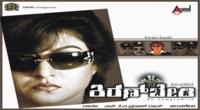
Khwahish Full HD Movie Download

Aadmi (1978) Full HD Movie Download
.jpg)
Papa Kahte Hain Full HD Movie Download

Tawaif Full HD Movie Download
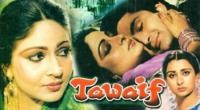
Devta Full HD Movie Download
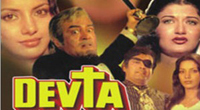
Kaaboo Full HD Movie Download

Jaal (1986) Full HD Movie Download
.jpg)
Julie (1975) Full HD Movie Download
.jpg)
Allari Alludu Full HD Movie Download
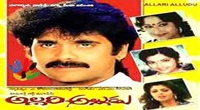
Zameen Aasman (1972) Full HD Movie Download
.jpg)
Zulm ka baadshah Full HD Movie Download
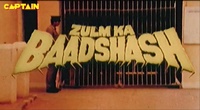
Just Math Mathalli Full HD Movie Download

Return Of Khuda Gawah Full HD Movie Download

Chottanikkara Amma Full HD Movie Download
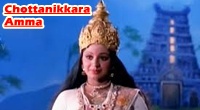
Ravi I Love You Full HD Movie Download
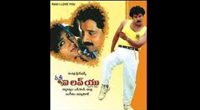
Aithey Entee Full HD Movie Download

Sanchalanam Full HD Movie Download

Surya Chandra Full HD Movie Download
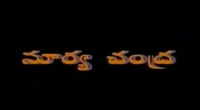
Marana Homam Full HD Movie Download
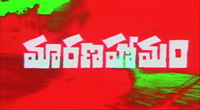
Rocket Singh: Salesman of the Year Full HD Movie Download
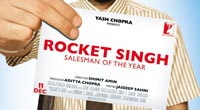
Download latest Movie from bollywood
- 1> baaghi 3
- 2> THE SKY IS PINK MOVIE FULL STORY AND REVIEW
- 3> Luka Chuppi
- 4> TO ALL THE BOYS I’VE LOVED BEFORE
- 5> Kabir Singh
- 6> Street Dancer 3D
- 7> Simmba
- 8> Gone Girl
- 9> The Girl Who Lived
- 10> Ludo
- 11> DILWALE DULHANIA LE JAYENGE
- 12> GUILTY
- 13> The Godfather
- 14> Adventures of Rusty
- 15> Sooryavanshi
- 16> Satyameva Jayate 2
- 17> Thappad
- 18> Bhool Bhulaiyaa 2
- 19> KGFChapter 2
- 20> Mardaani 2
- 21> Pinjar
- 22> Shivaji maharaj
- 23> Ek Villian 2
- 24> Hungama 2
- 25> Divergent
- 26> Mumbai Saga
- 27> The Internship
- 28> HIT (telugu)
- 29> Panga
- 30> The perfect date
- 31> 16 December
- 32> Gopala Gopala (Telugu)
- 33> Brahmastra
- 34> Gangubai Kathiawadi
- 35> Manmadhudu
- 36> Nenu local
- 37> Mahanati
- 38> Shatamanam bavathi
- 39> Lagaan
- 40> After
- 41> MOM
- 42> Shamshera
- 43> Raguvaran BTech
- 44> Khakee
- 45> The villain
- 46> OM
- 47> Mr. perfect
- 48> Bueatifull mind
- 49> Hichki
- 50> Gabbar Singh
- 51> Jogi
- 52> Before Sunrise
- 53> Before Sunset
- 54> Before Midnight
- 55> The Big Bull
- 56> Top Gun: Maverick
- 57> The Purge
- 58> The Sky is Pink
- 59> Laxmmi Bomb
- 60> Sadak 2
- 61> Sufna
- 62> Prithviraj
- 63> PK
- 64> Coolie No 1(2020)
- 65> Black Widow
- 66> Dear Zindagi
- 67> Dil Bechara
- 68> PHIR HERA PHERI
- 69> WAR
- 70> Dostana
- 71> RRR: Roudram Ranam Rudhiram
- 72> Maidan
- 73> Dabbang 3
- 74> Chhalaang
- 75> life as we know it
- 76> SherShaah
- 77> Sandeep Aur Pinky Faraar
- 78> Event Horizon
- 79> 83
- 80> Radhe: Your Most Wanted Bhai
- 81> Gunjan Saxena: The Kargil Girl
- 82> Mr India
- 83> Vivah
- 84> Anokha Bandhan
- 85> Ghost
- 86> Bhoot: Part One - The Haunted Ship
- 87> Haseen Dilruba
- 88> Laal Singh Chaddha
- 89> Qismat
- 90> Rajput
- 91> Drive
- 92> Dil Chahta Hai
- 93> Dil Ki Baazi
- 94> Dil Ka Rishta
- 95> Teesri Manzil
- 96> Dil
- 97> Love Aaj Kal
- 98> Khaali Peeli
- 99> Bunty Aur Babli 2
- 100> Atrangi Re
- 101> Gulabo Sitabo
- 102> Jodi
- 103> Suraj Pe Mangal Bhari
- 104> Deewana
- 105> Attack
- 106> Sardar Udham Singh
- 107> Toofan
- 108> THE LOVEBIRDS
- 109> Jersey
- 110> Ginny Weds Sunny
- 111> Thalaivi
- 112> Shiddat
- 113> Angels vs Zombies
- 114> Koi Mil Gya
- 115> Thank God
- 116> Bhuj: The Pride of India
- 117> Hum Aapke Hain Kaun
- 118> The Platform
- 119> Bird Box
- 120> Roohi Afzana
- 121> Torbaaz
- 122> Nikamma
- 123> World War Z
- 124> Extraction
- 125> Train to Busan
- 126> Life of Pi
- 127> SHAADI MEIN JROOR AANA
- 128> Himmat Aur Mehnat
- 129> To All The Boys: P.S. I Still Love You
- 130> Mimi
- 131> Good Newwz
- 132> Shubh Mangal Zyada Saavdhan
- 133> Raabta
- 134> Harry Potter and the Philosopher's Stone
- 135> Harry Potter and the Chamber of Secrets
- 136> Chhapaak
- 137> War of the Worlds
- 138> Harry Potter and the Prisoner of Azkaban
- 139> Harry Potter and the Goblet of Fire
- 140> MURDER MYSTERY
- 141> Shakuntala Devi
- 142> Bachchan Pandey
- 143> Jayeshbhai Jordar
- 144> Sheer Qorma
- 145> Saina
- 146> 'O' Pushpa I hate tears
- 147> Kedarnath
- 148> MS Dhoni The Untold Story
- 149> Chhichhore
- 150> Badhaai Ho
- 151> Unstoppable
- 152> Oz the Great And Powerful
- 153> The Girl on the Train
- 154> Haathi Mere Saathi 2020
- 155> The Conjuring: The Devil Made Me Do It
- 156> Gandhi Se Pehle Gandhi
- 157> The Song of Scorpions
- 158> Srimanthudu
- 159> Hello Guru Prema Kosame
- 160> Beauty and The Beast
- 161> Black Panther
- 162> Charlie and the Chocolate Factory
- 163> Bole Chudiyan
- 164> Fidaa
- 165> Duvvada Jagannadham
- 166> Bruce Lee: The Fighter
- 167> Hyper
- 168> Yaara
- 169> Red (2020)
- 170> Shivam
- 171> That Is Mahalakshmi
- 172> Nishabdham
- 173> Aashram 2020 web series
- 174> Laxmii
- 175> Mismatched
- 176> STUDENT OF THE YEAR 2
- 177> NAIL POLISH
- 178> Ramprasad Ki Tehrvi
- 179> KAAGAZ
- 180> 12 o Clock
- 181> The Power
- 182> bolo hau
- 183> Tribhanga
- 184> JAMUN
- 185> Madam Chief Minister
- 186> Maasaab
- 187> Aadhaar
- 188> Tanhaji
- 189> Bhaagi 3
- 190> Bhootnath
- 191> MALANG
- 192> Jai Mummy Di
- 193> Haathi Mere Saathi 2021
- 194> Shakeela
- 195> Unpaused
- 196> Annayya
- 197> Vamsoddharakudu
- 198> Mrugaraju
- 199> Narasimha Naidu
- 200> Sankranti
- 201> Manasu Maata Vinadhu
- 202> Anjaane
- 203> Apaharan
- 204> Bachke Rehna Re Baba
- 205> Bewafaa
- 206> Roohi
- 207> Radhe
- 208> Zindagi Khoobsoorat Hai
- 209> Yeh Mohabbat Hai
- 210> Yeh Kya Ho Raha Hai?
- 211> The Tomorrow War
- 212> DehradunDiary
- 213> Meri Shaadi Karaoo
- 214> Matruu Ki Bijlee Ka Mandola
- 215> No One Killed Jesica
- 216> Aag Ka Goola
- 217> Eight Million Dollars
- 218> Three Hundred
- 219> Cats and Dog
- 220> Decoy
- 221> Gold Rush
- 222> You Have Got Mail
- 223> Final Destination three
- 224> Tofan
- 225> Jungle
